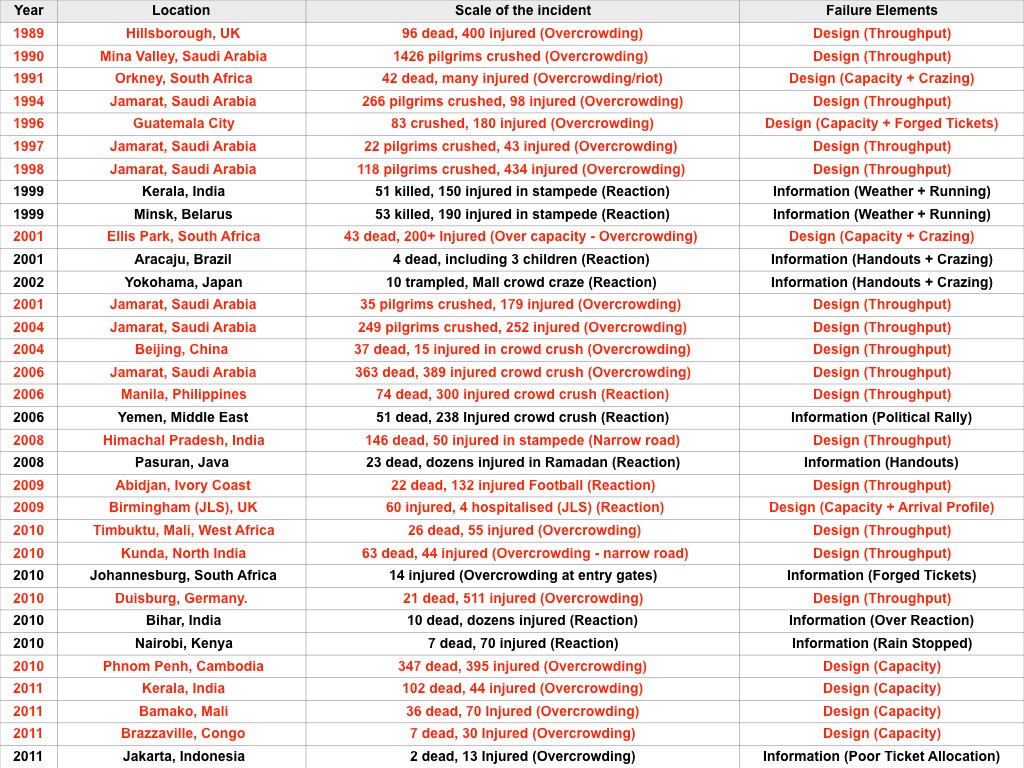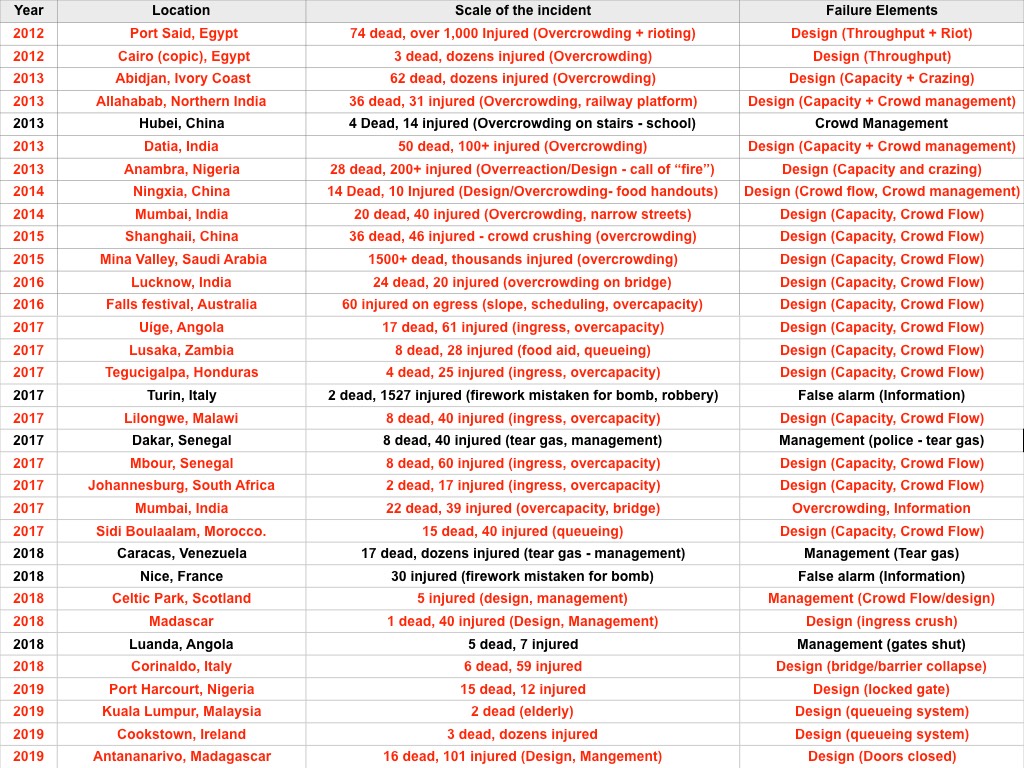_________________________________________________
Click here for information on our eLearning version of “Introduction to Crowd Science”
_________________________________________________
In all cases accidents don't just happen, there is always a cause. If we examine the underlying factors (causes) in worldwide accidents we observe that there are some fundamental similarities. There is a poor understanding of the sheer forces involved in crowd dynamics, the limitations of the site/event design (capacity/throughput), or mis-management (safety culture). We have been categorising the historic accidents/incidents into Design problems (too many people, not enough space), Information issues (sudden changes in the environment, poor or no information, confusing signage etc) or management problems (good design, good information, badly managed).
Brief history of crowd disasters
Over the last 30 years there have been a number of significant crowd related disasters. Below is a short list (but not all). We reviewed the underlying causality in these disasters to understand how the DIM-ICE model can be adapted to improve understanding of causality in accident/incidents and how we can develop better teaching programme to try and prevent future accidents that have similar underlying causes.
This is not a complete list of all incidents, just a selection (a few per year) for the lecture slides. For a complete list, click here


As we can see from the above there is a high percentage of design related disasters (in layman's terms - this is simply too many people and not enough space). Calculating safe passage through entry systems, into and out of events and from area to area in the complex and built environment is not difficult and I'm working on a series of teaching modules for risk assessment and risk management for crowd safety.
One of the key elements of crowd modelling is to understand the capacity of the space, how quickly it will fill and what time it will take to reach critical density. This does not need complex computer simulations as simple first pass capacity analysis gives us clear indications whether a system will work (or needs a radical design change). If a system fails a first pass analysis (sometimes called a rough cut capacity analysis) then it should be rejected as being "not fit for purpose".
Even with queueing systems in place, whenever crowds can arrive in numbers than may exceed a systems capacity there is a risk of problems. Identifying the nature, duration and scale of that risk is relatively simple maths. Click here for a page on queueing theory.